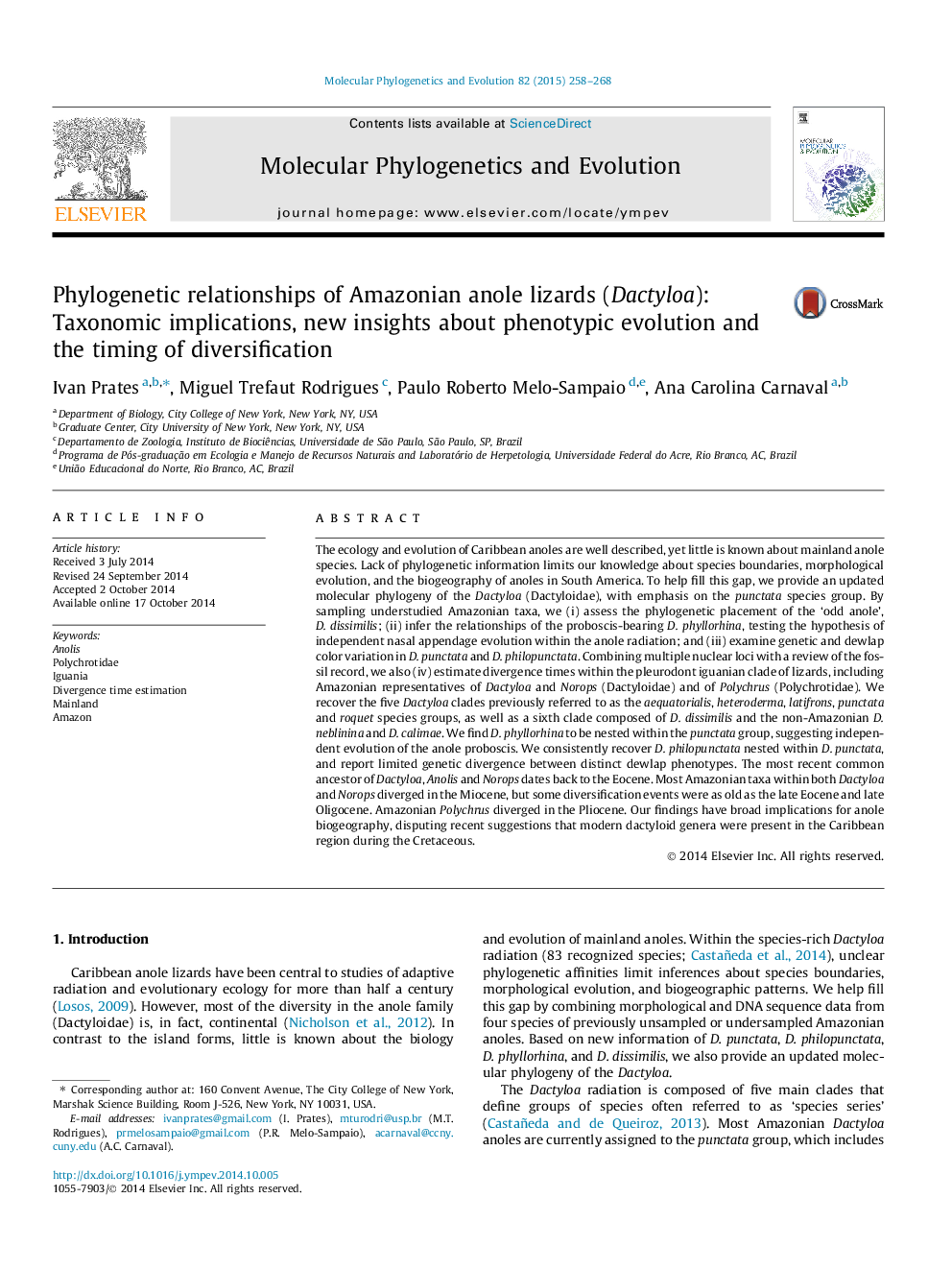| کد مقاله | کد نشریه | سال انتشار | مقاله انگلیسی | نسخه تمام متن |
|---|---|---|---|---|
| 5919040 | 1164256 | 2015 | 11 صفحه PDF | دانلود رایگان |

- We include previously understudied Amazonian anoles in a new phylogeny of Dactyloa.
- Out of the six main clades recovered, five correspond to Dactyloa species groups.
- The rostral proboscis evolved at least twice independently in anole lizards.
- Dewlap coloration patterns vary across genetically close populations.
- Amazonian Dactyloa, Norops and Polychrus diversified in the Paleogene and Neogene.
The ecology and evolution of Caribbean anoles are well described, yet little is known about mainland anole species. Lack of phylogenetic information limits our knowledge about species boundaries, morphological evolution, and the biogeography of anoles in South America. To help fill this gap, we provide an updated molecular phylogeny of the Dactyloa (Dactyloidae), with emphasis on the punctata species group. By sampling understudied Amazonian taxa, we (i) assess the phylogenetic placement of the 'odd anole', D. dissimilis; (ii) infer the relationships of the proboscis-bearing D. phyllorhina, testing the hypothesis of independent nasal appendage evolution within the anole radiation; and (iii) examine genetic and dewlap color variation in D. punctata and D. philopunctata. Combining multiple nuclear loci with a review of the fossil record, we also (iv) estimate divergence times within the pleurodont iguanian clade of lizards, including Amazonian representatives of Dactyloa and Norops (Dactyloidae) and of Polychrus (Polychrotidae). We recover the five Dactyloa clades previously referred to as the aequatorialis, heteroderma, latifrons, punctata and roquet species groups, as well as a sixth clade composed of D. dissimilis and the non-Amazonian D. neblinina and D. calimae. We find D. phyllorhina to be nested within the punctata group, suggesting independent evolution of the anole proboscis. We consistently recover D. philopunctata nested within D. punctata, and report limited genetic divergence between distinct dewlap phenotypes. The most recent common ancestor of Dactyloa, Anolis and Norops dates back to the Eocene. Most Amazonian taxa within both Dactyloa and Norops diverged in the Miocene, but some diversification events were as old as the late Eocene and late Oligocene. Amazonian Polychrus diverged in the Pliocene. Our findings have broad implications for anole biogeography, disputing recent suggestions that modern dactyloid genera were present in the Caribbean region during the Cretaceous.
Journal: Molecular Phylogenetics and Evolution - Volume 82, Part A, January 2015, Pages 258-268